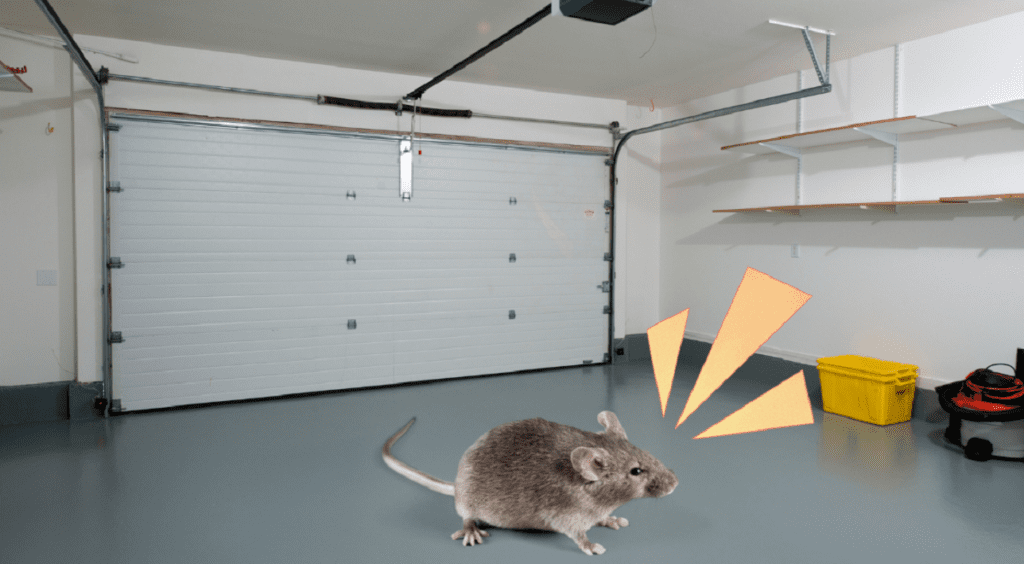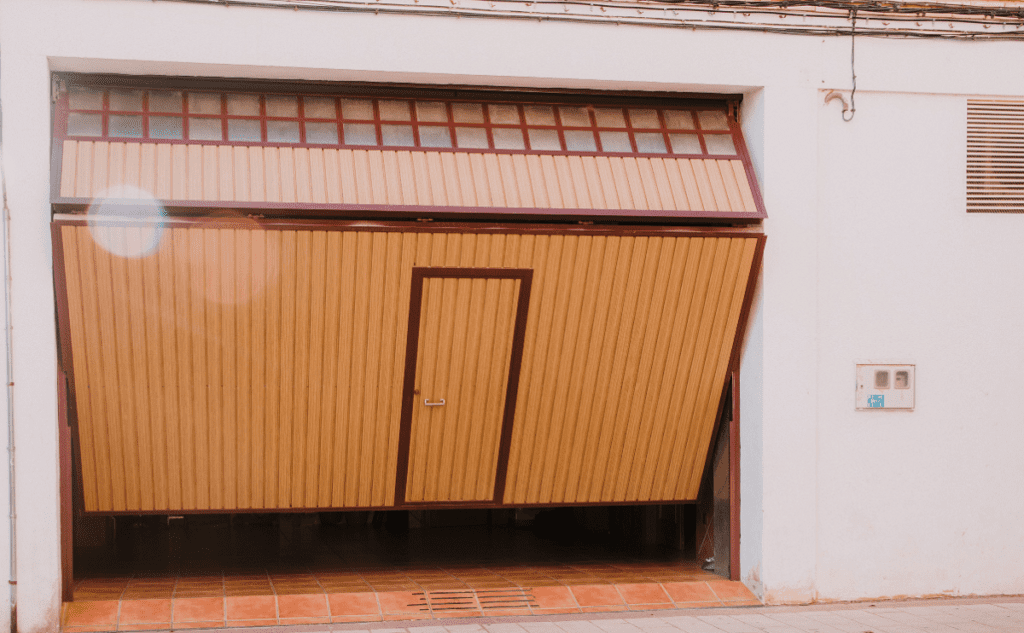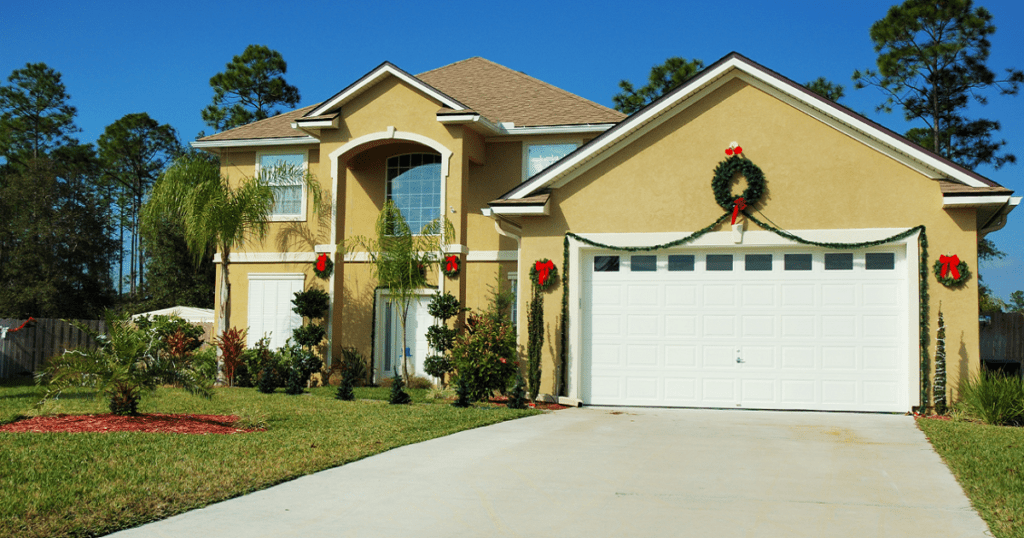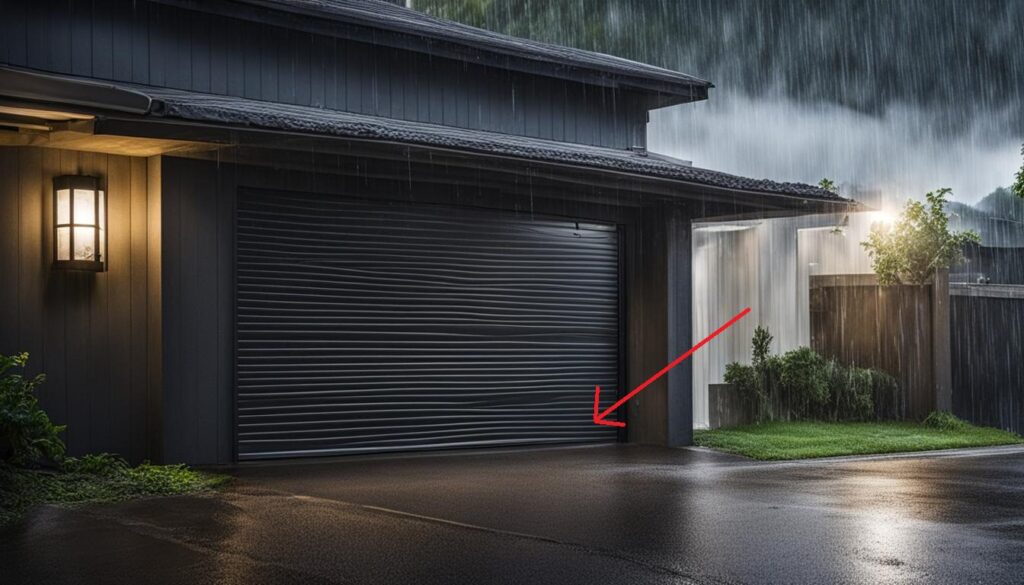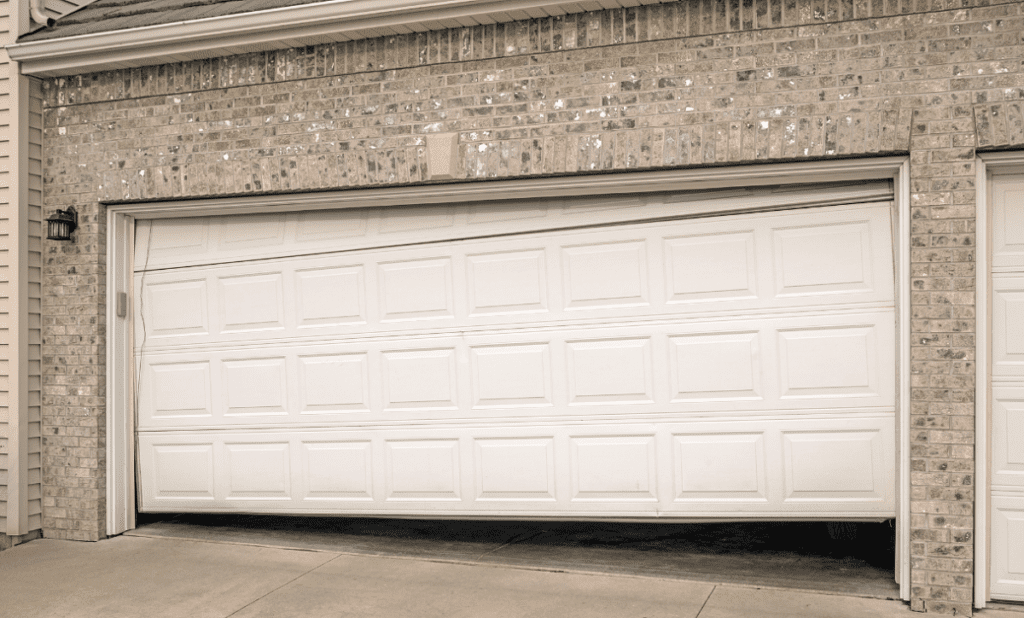
Why a Functional Garage Door is Essential
A garage door is not just an entrance to your house. It’s much more than that. It’s a barrier between you and the outside world, protecting you, your loved ones, and your property against thieves, bad weather, animals, and other hazards.
Your garage door is also one of the largest moving objects in your home. It needs to function smoothly and safely every time you operate it.
And if it doesn’t work correctly, it can cause serious injuries or even death. That’s why fixing garage door problems should be a top priority for every homeowner.
A malfunctioning or damaged garage door can compromise the structural integrity of your house and put you and your family at risk. However, many people tend to overlook the signs of a damaged garage door until it’s too late.
They assume that their doors are indestructible and don’t need any maintenance or repairs. But that couldn’t be further from the truth. Now, how to repair cracked garage door? Discover it here.
Repairing Cracked Garage Doors
One of the most common garage door crack issues is a cracked panel. Whether it’s due to weather conditions, impact from vehicles or bikes hitting them, or age-related wear-and-tear causes cracks in your panels, they will eventually appear sooner or later on most doors. Luckily there are cost-effective garage door repair options available for homeowners who want to fix their cracked doors without replacing them entirely.
In this article, we’re going to discuss some DIY tips for fixing a cracked garage door panel yourself with step-by-step instructions alongside some safety precautions for handling garage door cracks that require professional intervention. So whether you’re experiencing a minor problem with how your garage operates, or major damage has been done to one panel – we’ve got all the solutions here!
Identify the Cause of the Crack
Garage Door Crack Issues: Don’t Ignore Them
Is a cracked garage door dangerous? Absolutely! Not only does it impact the aesthetic appeal of your home, but it also poses a significant safety risk.
Identifying the cause of the crack is crucial as it will determine the best repair method. Common causes of cracks in garage doors include weather, age, and impact.
- Weather can wreak havoc on your garage door’s structural integrity. The constant exposure to harsh elements such as rain, snow, hail, and extreme temperatures can weaken garage doors and lead to cracks.
- Age is another common cause of cracks in garage doors. As time goes by and with regular use, your garage door will wear out and eventually show signs of damage.
- Impact is another cause of cracks in garage doors; this can be due to a collision with a car or other object or due to an attempted break-in.
Understanding what caused the crack will guide you toward selecting the right repair option.
Garage Door Troubleshooting: How to Identify the Cause of a Crack
Garage door repair tips should always start by identifying the root cause of a problem before any actual repairs are carried out. To identify what caused your cracked garage door, conduct a thorough inspection from both inside and outside your home.
Begin by examining the location of the crack – if it’s around one panel only, then perhaps that particular panel needs replacing instead of repairing. If you notice more than one panel has cracks or damages around them or there are dents on some panels, then you may need to consider replacing your entire garage door.
Check for any rust on hardware, such as hinges or springs, that may have weakened their strength, causing pressure on certain parts and leading to cracking over time. Inspect all parts thoroughly, including cables, rollers & tracks, as these could cause pressure points leading to cracks.
Materials for Fixing Garage Door Cracks: Sealants and More
DIY tips for fixing a cracked garage door can be quite helpful if you have the right tools and materials. Once you have identified the cause of your garage door crack, it’s time to choose the right repair option. If the crack is minor, then using a sealant or filler may do the trick.
There are different types of sealants specifically designed for repairing garage doors, such as silicone, epoxy resin, and polyurethane. Each type has specific properties, such as resistance to weather, durability, and adhesive strength, which you should consider when choosing one.
But beware; not all sealants work well on all materials that make up your garage door panels. If in doubt about the type of sealant to use, consult with a professional before applying it yourself.
Safety Precautions for Garage Door Repair: Don’t Put Yourself At Risk
Can a garage door be repaired, or should it be replaced? One thing is sure – handling garage door cracks requires safety precautions! Garage doors are heavy and require specialized knowledge in repairs. DIY repairs can lead to accidents unless you take proper safety measures.
- Ensure that you disconnect power sources before carrying out any repair work on your garage door opener system.
- Wear protective gear such as gloves and goggles when working with tools that could cause injury.
- Never attempt to lift a heavy or damaged panel alone; always ask for help from another person with experience in handling them.
- Identifying the cause of a crack in your garage door is crucial, so before attempting any repairs- always put safety first!
Properly assessing damages will guide you toward selecting the best repair method suitable for your particular situation. Whether fixing minor cracks with sealants or replacing damaged panels altogether, always choose quality materials that come backed by manufacturer warranties and ensure long-lasting durability guaranteed by professionals!
Assessing the Damage
Inspect the Crack and Surrounding Areas for Any Additional Damage
The first step in fixing a cracked garage door is to assess the damage. This means inspecting not only the crack itself but also the surrounding areas for any additional damage. Look for dents or other signs of wear and tear that could be contributing to the problem.
If you notice any other issues, it may be time to consider a full garage door replacement rather than just a repair. When assessing the damage, it’s important to consider both aesthetic and functional factors.
While a small crack may not seem like a big deal, it can compromise the structural integrity of your garage door and potentially cause safety concerns. Additionally, if left unaddressed, even minor damage can grow over time and become much more expensive to fix.
How to Determine if a Repair or Replacement is Necessary
Once you’ve inspected the damage, it’s time to determine whether repair or replacement is necessary. In general, if your garage door is relatively new and has only sustained minor damage in a single area, repairing it can be a cost-effective option.
However, if there are multiple cracks or large areas of significant damage throughout your garage door panel(s), replacing them may be more practical. Another factor to consider when deciding between repair and replacement is your budget.
While repairing a cracked garage door panel may seem like an easy fix at first glance, costs can add up quickly once you factor in materials and labor costs. In some cases, replacing your entire garage door system with something more durable may actually be cheaper in the long run.
When dealing with cracked garage door panels or other types of damage-related issues with your garage doors – Reinforce their structural integrity by regularly conducting maintenance checks on them; Fix minor problems as soon as possible before they snowball into larger ones. If you notice significant damage or structural issues with your garage door, don’t hesitate to contact a professional for help.
Repair Options
Cost-Effective Garage Door Repair
Signs of a damaged garage door can be alarming, but repairing cracked panels doesn’t have to break the bank. Homeowners may be tempted to replace their entire garage door when a crack appears, but this is rarely necessary. Patching and filling cracks will save you money versus replacing the whole unit.
Materials for Fixing Garage Door Cracks
When it comes to fixing cracked garage door panels, there are a few different options for materials. Some popular sealants include epoxy, silicone caulking, or even wood fillers. Many people use car bondo as it is an effective method for sealing a crack in your garage door.
Replace Damaged Garage Door Panels for Ultimate Convenience
Sometimes the damage to your garage door may be too extensive, and just patching or filling won’t suffice. In such cases where there are many dents and cracks on different panels throughout the door, replacing the panel could be more cost-effective in the long run than repeatedly repairing it.
It is important to assess which repair option is best depending on the severity and location of the crack. For small surface cracks that do not penetrate through the panel, using sealant might work perfectly fine in sealing off those cracks.
However, if there is significant damage to the structural integrity of your garage door due to multiple large dents or deep cracks that have penetrated through several layers of your door’s material – then panel replacement might be necessary. Don’t panic if you notice a crack or two on your garage doors – they don’t always require expensive replacements!
A DIY approach can help homeowners save money while providing better control over the final result. Either way, remember that taking care of those small maintenance issues as soon as possible can make all the difference in prolonging the time between major repairs and keeping your garage door looking and functioning at its best.
Tools and Materials Needed
Tools and Materials Needed for Each Repair Option
If you are considering repairing a cracked garage door, there are tools and materials you will need to fix the issue. The specific tools and materials required will depend on the chosen repair method.
For example, if you choose to use a patch or filler material, then consider purchasing a putty knife or sandpaper to smooth out the surface area around the crack. If you are replacing a damaged panel, then ensure that you have the measurement of your garage door panels with accurate measurements.
Some other common tools used in garage door damage repair include:
- Hammer
- Screwdriver
- Drill
- Pliers
When it comes to materials for fixing garage door cracks, there is a lot of variety available in the market which may differ based on quality and price range.
However, some common items include:
- Epoxy resin fillers
- Sealants like silicone caulk or weatherstripping tape
- Reinforcement plates or struts
Tips on Where to Purchase Materials
When looking for supplies to fix your garage door crack issues, it’s important that you buy quality products from reputable suppliers. Your local hardware store is an excellent place to start your search, as they should carry most of what you need depending on your location.
You can also check online retailers like Amazon, which offers a wider selection of products, including cost-effective options for budget-friendly DIY garage door repairs. However, always be cautious when buying products online by carefully reading reviews before deciding what product to purchase.
Remember that reinforcing garage doors with proper reinforcement plates or struts can help prevent future damage and maintain their structural integrity. DIY tips for fixing a cracked garage door can save money but should be approached carefully with utmost attention given to ensuring safety while working.
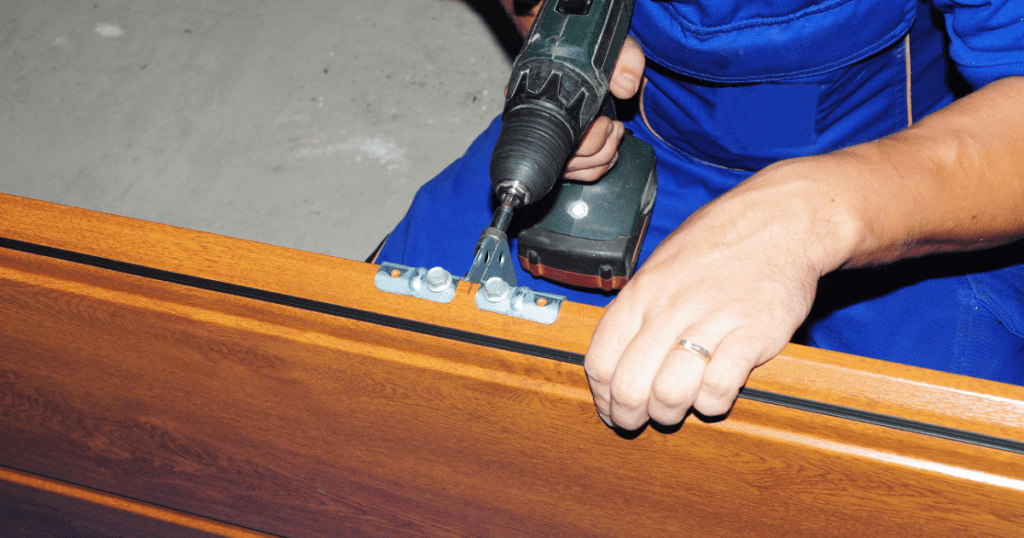
Step-by-Step Repair Instructions
Patching or Filling Method
Garage door damage repair is a common problem that many homeowners face. If you notice a crack in your garage door, there are several ways to fix it.
The most popular method is patching or filling. To begin, you’ll need to clean and prepare the surface area around the crack by removing any debris and dirt.
Use a putty knife to ensure all debris is removed. Next, apply garage door crack sealant or filler material into the crack with a caulking gun.
Smooth out the surface using a putty knife or sandpaper. Be sure to follow the manufacturer’s instructions for drying times and other important details.
Some people may say that replacing the entire panel of your garage door is necessary for fixing any cracks, but this isn’t always true. Patching or filling can be an effective solution if done correctly and carefully.
Replacing Damaged Panel Method
If patching or filling won’t work for your damaged garage door panel, then you may need to replace it entirely. This method will require more time and effort than patching but will provide longer-lasting results. To begin, remove the damaged panel from the track system using pliers and a screwdriver as needed.
Measure the new panel to ensure it fits properly in place of the old one. Once you have your measurements down, install the new panel into the track system by attaching it with screws according to the manufacturer’s instructions.
It may take some time, depending on how complex an installation process exists, but this option provides excellent results if done right. Remember that DIY tips for fixing a cracked garage door are meant as guideline purposes only so please take into account safety precautions for garage door repair as you work through these steps repairing, reinforcing, and eventually restoring its structural integrity. Start with double-checking the overall state of your garage door and looking for signs of a damaged garage door before getting to work with replacing any panels.
Maintenance Tips to Prevent Future Cracks
Prevention is Key to Garage Door Structural Integrity
Now that you have repaired your cracked garage door, the last thing you want is for it to crack again. To ensure the structural integrity of your garage door, regular maintenance is key.
A quick visual inspection before opening and closing the door can help identify any problems early on. Even better, perform a thorough inspection on a regular basis, including checking hardware, rollers, and tracks.
Making these inspections routine can prevent major problems from developing. Another way to maintain your garage door’s structural integrity is with lubrication.
It may seem like an insignificant detail, but using proper lubrication on hinges, springs, and other moving parts will prevent rusting or seizing that could lead to cracks in the future. Lubrication not only helps keep those parts in good working order but also helps reduce noise and resistance as your garage door moves up and down.
The Cost-Effective Solution: DIY Garage Door Maintenance
Calling a professional for every single issue with your garage door can add up quickly. However, if you are handy enough or have some DIY experience under your belt, there are several things you can do yourself to keep your garage door functioning properly. A few simple yet effective DIY tips for fixing a cracked garage door include regular cleaning of tracks and springs with water or light solvent such as WD-40® Multi-Use Product (CAUTION: Always follow label directions), tightening up loose bolts or screws with a wrench or screwdriver as well as painting metal parts that might be susceptible to rust damage.
Safety First: Precautions for DIY Garage Door Repair
Please keep in mind that even though there are many things you can do yourself when it comes to maintaining and repairing your damaged garage doors, safety comes first! To avoid any accidents while performing any DIY garage door repair work, make sure to follow the manufacturer’s instructions on how to use tools and equipment properly.
Always wear protective gear, such as gloves and safety glasses, when working with power tools that may generate sparks or debris. In addition, if you notice any signs of a damaged garage door or if your DIY repairs didn’t solve the problem, calling in a professional expert is the right choice.
They will have the necessary materials for fixing garage door cracks, reinforcing garage doors in need of repairs, and recommend whether you should repair or replace your damaged garage door panel. Ultimately, it is better to be safe than sorry when it comes to issues with your garage door.
Frequently Asked Questions
Can you repair a crack in a garage door?
You can repair a crack in a garage door, often by using a high-quality sealant or a patching material, depending on the severity of the crack. However, if the crack is too large or the door is significantly damaged, you might need to replace the entire panel or door.
What causes garage doors to crack?
Garage doors can crack due to a variety of reasons, including excessive force, age, weathering, lack of maintenance, and extreme temperature fluctuations. In some cases, substandard material or poor installation can also lead to cracks.
How do you repair a tear in a metal garage door?
Repairing a tear in a metal garage door typically involves using a patch of the same material, adhering it with a strong, weather-resistant adhesive, then sanding and painting it to match the rest of the door. This task requires some skill and may be best left to a professional to ensure a seamless repair.
Is it safe to repair a garage door yourself?
It is safe to conduct minor repairs and maintenance on a garage door yourself, such as lubricating moving parts or repairing minor cracks. However, tasks that involve the door’s spring mechanism or significant structural repairs should be done by a professional due to the risk of injury.
What is the best sealant for garage cracks?
The best sealant for garage cracks often depends on the material of your garage door. For wooden doors, a high-quality, weather-resistant wood filler or sealant can work well. For metal doors, a metal-compatible sealant or epoxy is a good choice.
What can I use to fix a cracked door?
To fix a cracked door, you could use wood filler or putty for wooden doors or a metal-compatible sealant or epoxy for metal doors. After applying the material and letting it dry, you can sand it smoothly and paint it to match the rest of the door.
Conclusion
Key Points Discussed in the Article
Garage doors are an essential component of any home as they provide safety, security, and convenience. However, over time, garage doors can develop cracks that not only compromise their structural integrity but also pose a danger to you and your family. In this article, we discussed how to identify the causes of garage door cracks, assess damage levels, and offer tips on how to fix them.
We outlined several repair options, such as patching or filling cracks with epoxy or fiberglass materials or replacing damaged panels altogether. Additionally, we provided maintenance tips that can help prevent future cracks from forming.
Now that you know what causes garage door cracks and how to fix them using various methods such as patching/filling or replacing panels, it’s time for you to take action. Do not ignore minor issues with your garage door, as they can quickly escalate into more significant problems that may require expensive repairs or even total replacement. A cracked garage door is dangerous and needs immediate attention.
DIY repairs are possible but pose risks such as falling parts or injuries from working around heavy machinery. Therefore it’s essential to follow proper safety precautions when handling any repair work.
If unsure about your ability to perform repairs safely or if the damage is extensive enough that it requires professional assistance, don’t hesitate to call a reputable garage door repair company. Remember always; safety comes first!



